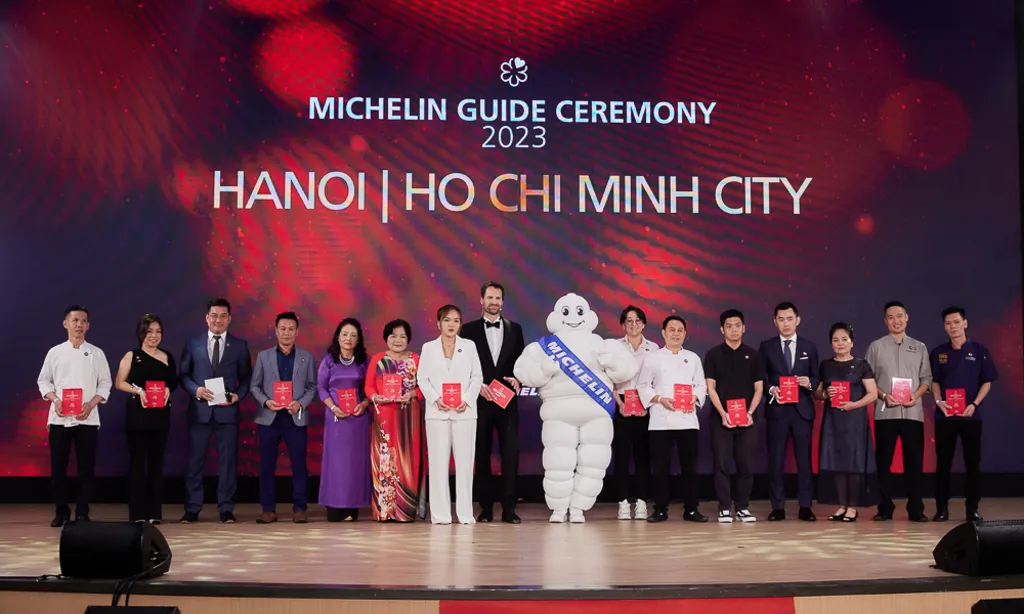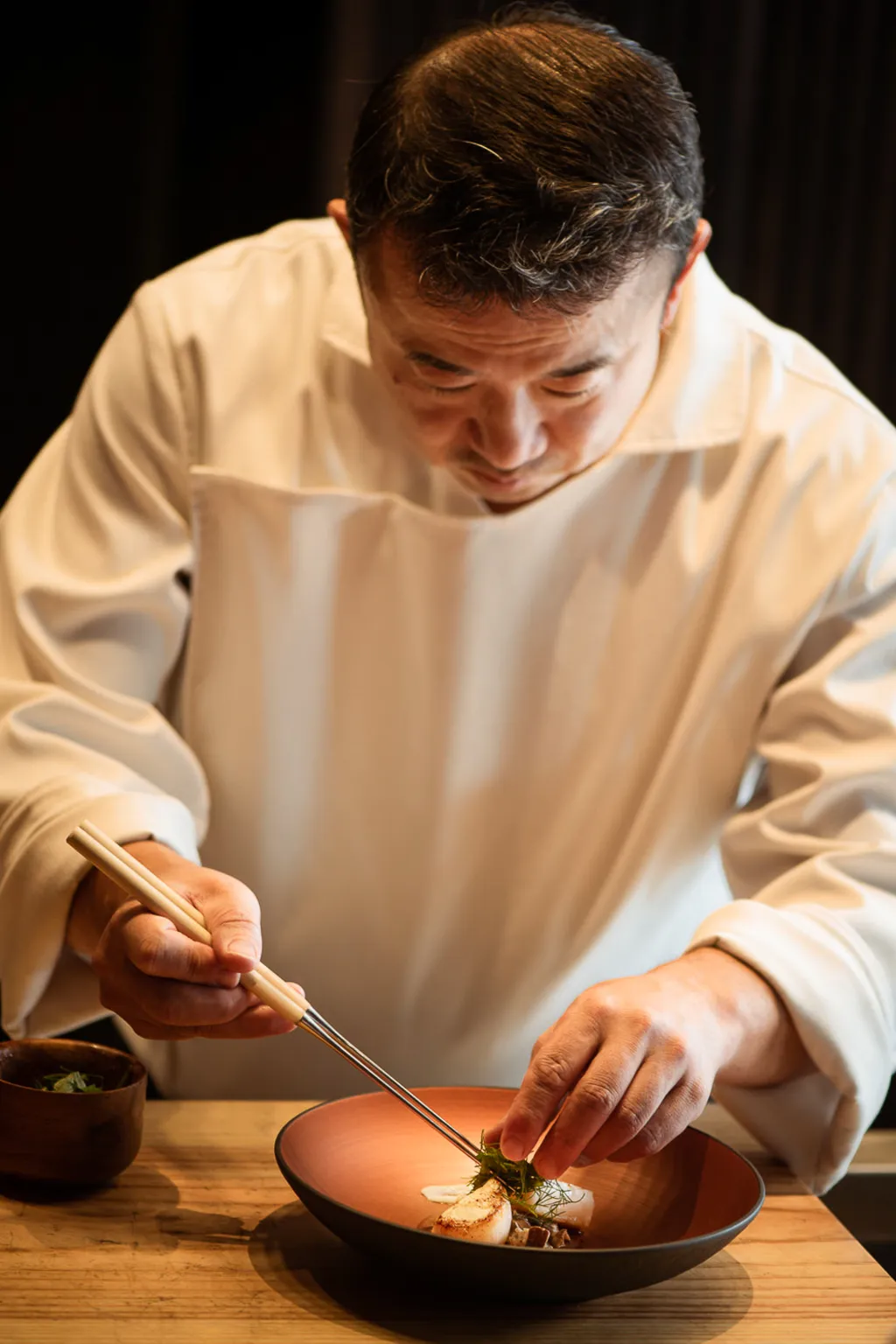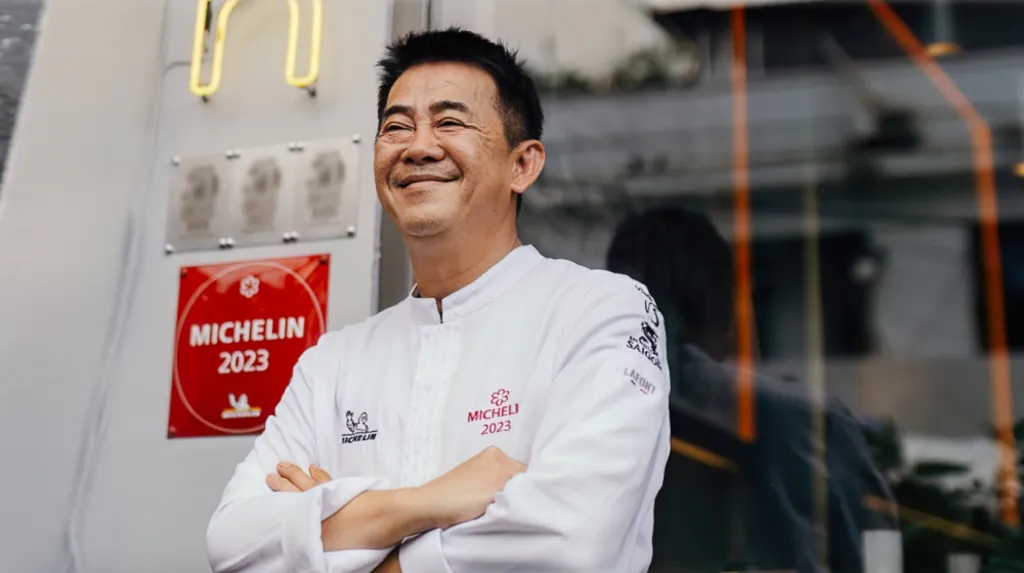 Brandinfo
Brandinfo

The essence of culinary spirit
Renowned Singaporean food blogger, Jovel Chan, who has spent years exploring Vietnamese cuisine, recently expressed a heartfelt concern that diners in Vietnam often misunderstand the Michelin star.
She said: “There is no Michelin star for chefs, only for restaurants. So, the advertising of Michelin-starred chefs is not accurate”.
Therefore, with the upcoming Michelin Guide in Vietnam, she is excited about the prospect of authentic Michelin-starred restaurants, to eliminate the confusion that has persisted for so long.
 |
| The exquisite flavours of Vietnamese cuisine have caught the attention of Michelin food inspectors. |
In reality, the Michelin list is not as out of reach as one might think. A street food stall, a casual eatery, a restaurant serving authentic Vietnamese dishes, etc. all have the potential to catch the eye of Michelin food inspectors at any time.
As culinary artist Anh Tuyet puts it: “Fine dining doesn't always have to be in a fancy restaurant to earn a Michelin star.”
The Michelin star has undoubtedly made an impact on the honoured restaurants. Gia Restaurant, after receiving its first star, was fully booked for three months. Securing a table at Anan Saigon Restaurant also requires booking one to two months in advance. Peter Cuong, the owner of the restaurant, noted that while previously the majority of customers were foreigners, now more Vietnamese diners are coming. The Head Chef Yamaguchi Hiroshi of the Japanese restaurant Hibana by Koki shared that after being awarded a Michelin star, the restaurant received numerous reservation requests from diners. However, due to limited seating, the restaurant unfortunately had to turn away many customers.
 |
| Michelin Guide-listed restaurants with a number of guests and reputations have soared since the announcement. |
Restaurants listed in the Bib Gourmand or Michelin Selected categories have seen a surge in customer traffic and increased mentions on forums. Pho Ga Nguyet (Nguyet Chicken Noodle Soup), renowned for its signature mixed chicken pho, has maintained its pricing for years and has always attracted a steady stream of customers, opening from morning till night. Since receiving the Michelin award, daily customer numbers have doubled or tripled.
Similarly, Xoi Bat restaurant’s owner, Phuc Thinh, said: "The restaurant had a stable customer base before the Michelin event, but has since experienced a significant increase in customers. To ensure the best service quality, the restaurant has temporarily suspended delivery services, and online orders, and focused solely on serving dine-in customers.”
Meanwhile, Summer Le, founder and Executive Chef of Nen Light restaurant in District 1, has seen a rise in patrons, with tables often fully booked due to the Michelin effect. The restaurant has implemented a reservation system to manage the influx of customers.
The owner of Bun Cha Huong Lien, Nguyen Thi Lien, expressed her surprise and excitement at her restaurant being included in the Michelin Guide.
“Before the evening award ceremony, we had no idea about anything until my son received images from everyone and sent them to me to see, and I still didn't understand. After researching, I understood, and at that time, I felt very excited,” Lien said.
Prior to the surge in customers following the Michelin recognition, the restaurant was already well-known, having been visited by former President Obama.
 |
| The rise of Vietnamese street food in Michelin-starred restaurants |
Vietnamese cuisine has been gaining recognition on the global stage, with many traditional street foods making their way onto the menus of Michelin-starred restaurants. This is a significant development for the Vietnamese culinary scene, as it marks a shift towards international recognition and appreciation for the country's diverse and flavourful dishes.
According to Jovel Chan, a prominent figure in the culinary world, the criteria for the Michelin Guide goes beyond just taste – it also encompasses a harmonious blend of flavours and a representation of the Vietnamese culinary identity.
This “Vietnamese style”, as Chan describes it, is now being embraced and celebrated on a global scale. Culinary artist Anh Tuyet said: “Sun Group's contribution in bringing Michelin to Vietnam has created a mark, a breakthrough in Vietnamese cuisine. After that event, it's like there's a driving force for culinary entrepreneurs to strive for a milestone.”
If in the past, Vietnamese cuisine was only seen as street food and simple dishes, now even a seemingly familiar dish can appear on the tables of Michelin-starred restaurants, with full sophistication.
“In my opinion, the first good thing that Michelin brings to us is the international standard for restaurants,” Peter Cuong said.
“Now we can confidently introduce to the world a culinary essence. It took us six years to change the perception of tourists about Vietnamese cuisine by elevating Banh My (bread) and Pho (noodle soup) into exquisite flavours using high-quality ingredients and innovative, elaborate cooking methods”.
 |
| The Head Chef of Hibana by Koki Head, emphasises the important factor for achieving a Michelin-star restaurant: the ingredients. |
Hibana by Koki is the only Japanese restaurant in Vietnam to be awarded a Michelin star. Renowned head chef Yamaguchi Hiroshi attributes this prestigious accolade to the exceptional quality of ingredients used in the restaurant.
He said: “We source special ingredients, some of which are available in Vietnam or Hanoi, but we don't use them in the conventional way. Our chefs utilise these ingredients with unique requirements, and their cooking techniques contribute significantly to the Michelin star recognition.”
This establishment, located within a rare hotel to achieve a Michelin star in just two years of operation, has been lauded by CNN as a culinary miracle. Experience the epitome of fine dining at Hibana by Koki, where every dish is a testament to the pursuit of excellence.
Post-Michelin and journey of culinary discovery
The Michelin Guide is a game-changer. Its list changes every year, and there is no room for complacency.
“We have a delicious dish, a specialty, but it's not well-known," emphasised Anh Tuyet.
"The problem is that we lack a strong and comprehensive marketing campaign to promote Vietnamese cuisine to the world.”
A year may not be a long time, but the initial steps show that the brands that have been honoured, and Vietnamese restaurants in general, are making more efforts for the long journey of Vietnamese cuisine.
 |
| Peter Cuong, owner of Anan Saigon restaurant, has been awarded 1 Michelin star. |
Peter Cuong believes that receiving a Michelin star or being listed in prestigious rankings is a motivation for the restaurant to constantly strive for improvement and innovation.
He said: “Those who have visited the restaurant three years ago would recognise that we have improved significantly since then.”
With the announcement of the Michelin Guide, renowned chefs who have worked at Michelin-starred restaurants around the world have planned to open restaurants in Vietnam. Many restaurants have openly expressed their hopes of being the next names on the list in the coming years.
It is worth noting that, after going through many restaurants on the Bib Gourmand or Selected list, the “pressure” from Michelin is what drives restaurant owners to improve their food and service style, rather than simply increasing prices.
Nguyen Xuan Quynh, the Secretary General of the Vietnamese Chefs Association, emphasises the importance of recognised restaurants in maintaining their prestigious titles.
He believes: "It is crucial for these establishments to uphold their standards and leverage the Michelin recognition to contribute to the sustainable development of both the restaurant industry and Vietnamese cuisine, as well as to provide a memorable experience for visitors.”